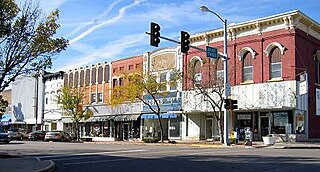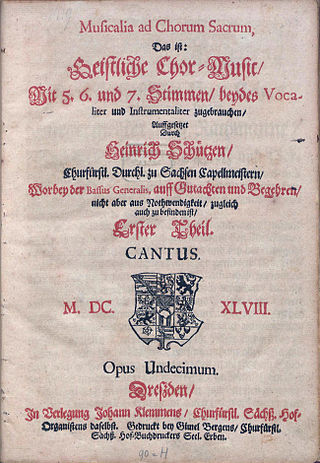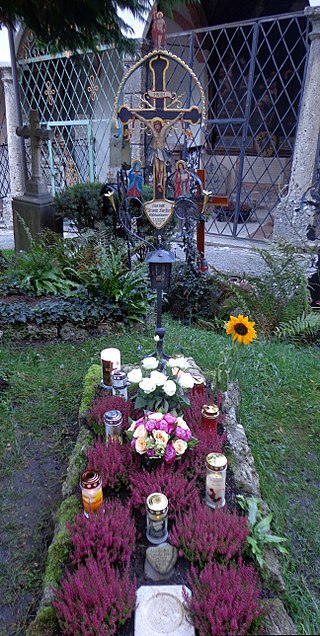
LaSalle or La Salle is a city in LaSalle County, Illinois, United States, located at the intersection of Interstates 39 and 80. It is part of the Ottawa, IL Micropolitan Statistical Area. Originally platted in 1837 over one square mile, the city's boundaries have grown to 12 sq mi (31 km2). City boundaries extend from the Illinois River and Illinois and Michigan Canal to a mile north of Interstate 80 and from the city of Peru on the west to the village of North Utica on the east. Starved Rock State Park is located approximately 5 mi (8 km) to the east. The population was 9,582 as of the 2020 census, down from 9,609 at the 2010 census. LaSalle and its twin city, Peru, make up the core of the Illinois Valley. Due to their combined dominance of the zinc processing industry in the early 1900s, they were collectively nicknamed "Zinc City."

Carl Gustav Carus was a German physiologist and painter, born in Leipzig, who played various roles during the Romantic era. A friend of the writer Johann Wolfgang von Goethe, he was a many-sided man: a doctor, a naturalist, a scientist, a psychologist, and a landscape painter who studied under Caspar David Friedrich.

Julius Ludwig Weisbach was a German mathematician and engineer.
Alle Jahre wieder is a well-known German Christmas carol. The text was written in 1837 by Wilhelm Hey. It is usually sung to a melody attributed to Friedrich Silcher, who published it in an 1842 song cycle based on a book of fables by Otto Speckter.

Psalm 42, Op. 42 Wie der Hirsch schreit is a cantata by Felix Mendelssohn, setting Psalm 42 in German. It was written and published in 1837 for soloists, mixed choir and orchestra.

"Aus tiefer Not schrei ich zu dir", originally "Aus tieffer not schrey ich zu dir", later also "Aus tiefer Noth schrei' ich zu dir", is a Lutheran hymn of 1524, with words written by Martin Luther as a paraphrase of Psalm 130. It was first published in 1524 as one of eight songs in the first Lutheran hymnal, the Achtliederbuch, which contained four songs by Luther, three by Paul Speratus, and one by Justus Jonas, and also appeared the same year in the Erfurt Enchiridion. It is part of many hymnals, also in translations. The text inspired vocal and organ music from the Renaissance to contemporary, including composers such as Johann Sebastian Bach, who based a chorale cantata on it, Felix Mendelssohn and Max Reger.
Carus-Verlag is a German music publisher founded in 1972 and based in Stuttgart.
"Nun lob, mein Seel, den Herren" is a Lutheran hymn written in German by the theologian and reformer Johann Gramann in 1525. It was published in 1540 and appears in 47 hymnals. A translation by Catherine Winkworth, "My Soul, now Praise thy Maker!", was published in 1863.

Heinrich Schütz composed four extant settings of the Magnificat or Song of Mary, one of the three New Testament canticles. He set one in Latin and three in German. In the Schütz-Werke-Verzeichnis (SWV), the compositions have the numbers 344, 426, 468 and 494. The settings on the German text are all part of larger groups of works. They are settings of Martin Luther's German Magnificat, Meine Seele erhebt den Herren. Schütz wrote the compositions for different forces and occasions.

Geistliche Chormusik is a collection of motets on German texts for choir by Heinrich Schütz. It was printed in Dresden in 1648 as his Opus Undecimum, and comprises 29 individual settings for five to seven voices, which were assigned numbers 369 to 397 in the Schütz-Werke-Verzeichnis (SWV). The original title was Geistliche Chor-Music, Erster Theil which indicates that Schütz planned a second part. It is also known as Geistliche Chor-Music 1648. The collection contains earlier and new works and a German arrangement of a motet by Andrea Gabrieli.

Armin Kircher was an Austrian composer and conductor.

Abendlied, Op. 69/3, is a sacred motet by Josef Rheinberger for a six-part mixed choir (SSATTB). It has been regarded as his best-known sacred composition. He wrote the first version in 1855 at the age of 15.

Deutsches Hochamt is the title common to several mass compositions by Michael Haydn, setting the mass ordinary in German by Franz Seraph von Kohlbrenner. Three of the works require trained singers and orchestra, while a fourth is kept simple to be sung by the congregation, as a Deutsche Singmesse (Betsingmesse). His best-known German High Mass is catalogued as MH 560. Haydn's masses in German are also known by the incipit of the first of ten songs, "Hier liegt vor deiner Majestät".

The Responsories by the German composer Max Reger are 20 short settings of mostly biblical texts in English, to be used as responsories in Lutheran church services. Composed in 1911, they were first published in Philadelphia in 1914 as The Responsories.

Six Motets, Op. 82, are six motets for choir a cappella by Friedrich Kiel. He set selected psalm verses in German. The motets were published in 1883 by Bote & Bock, dedicated to H. A. Köstlin, as Sechs Motetten für gemischten Chor a cappella.

"Dein Lob, Herr, ruft der Himmel aus" is a German Catholic hymn. Adolf Lohmann adapted a 1659 hymn by the Jesuit astronomer Albert Curtz, who paraphrased Psalm 19. The melody appeared in Augsburg in 1669. It was No. 1 in the 1938 hymnal Kirchenlied and is part of the German Catholic hymnal Gotteslob as GL 381.
"Nun singt ein neues Lied dem Herren" is a Christian hymn with German text by Georg Thurmair. He based it on Psalm 98 and wrote it in 1967 to match a traditional 16th-century melody. The song is part of German hymnals, including Gotteslob, and songbooks.

Mary Hegeler Carus was an American engineer, editor and entrepreneur. In 1882 she was the first woman to graduate in engineering from the University of Michigan.
Christoph Lehmann is a German organist, harpsichordist, church musician and composer, especially in the field of Neues Geistliches Lied (NGL). He has worked as a continuo harpsichordist and organist in performances and recordings of early music with several ensembles.

Messe brève no. 7 is a missa brevis in C major by Charles Gounod, composed in 1877 for two vocal parts and organ, and expanded in 1890 to four choir parts and organ. It is subtitled "in C aux chapelles".















